Who is the Next Padres Prospect to Reach the Majors?
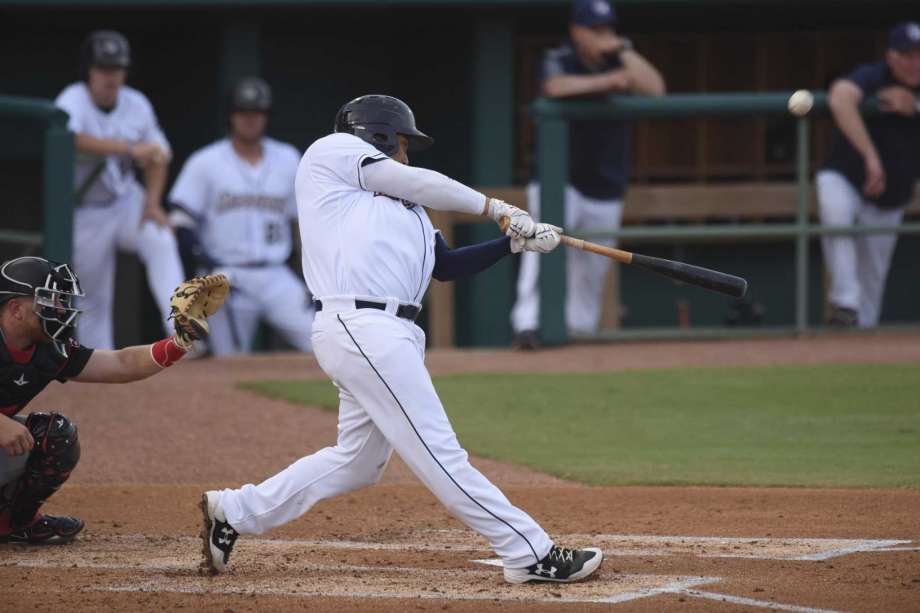
Credit: MIssions
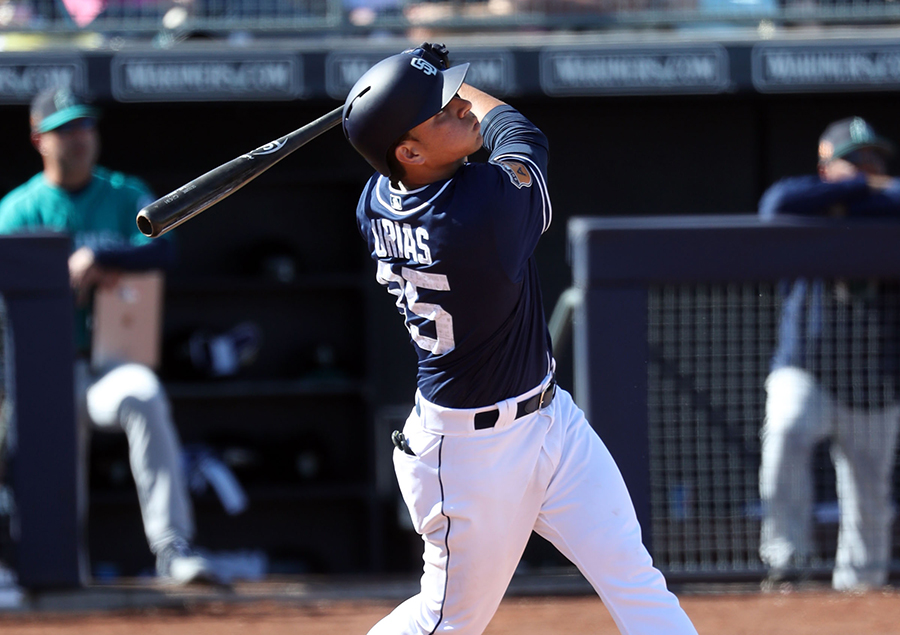
It is evident that the Padres are going for an “all-youth movement” going into the final months of the season. Gone are the likes of Tyson Ross, Jordan Lyles, and “Twitter King” Phil Hughes, and in are the likes of Brett Kennedy, Jacob Nix, and Trey Wingenter.
The veterans are being left behind while the youngsters are finally getting their time in the sun.
It is obvious that these three are the first of many prospects who will be making their debuts in the coming games, and all of them have earned more than just a cup of coffee.
However, there are many others who are just as deserving of making the trip from El Paso, or even San Antonio, to San Diego, to play in beautiful Petco Park. So, just who is the next Padres prospect that could be making their way up to play in the big leagues?
Here are a few players who are deserving of a chance:
This one was obvious, wasn’t it? The No. 4-ranked prospect according to MLBPipeline, Urias has been looking as sharp as ever, collecting a .270/.3379/.410 batting line and a 113 wRC+ in 105 games in El Paso. While this is a slight downgrade from what he has done in seasons prior, and his amount of strikeouts has gone up, his wRC+ is only 11 points lower then his 2017 wRC+ of 124 and he has continued to field his position very well.
His bat-to-eye skills are as sharp as ever and he will be competing for the starting second baseman job in spring training. With a call-up to the majors now, Andy Green could get a look at what the young second baseman can do in a Padres jersey, while Urias would be reunited with his old roommate in Franmil Reyes and could learn valuable lessons from a veteran like Freddy Galvis.
Plus, Urias can’t do any worse than the three different second basemen the Padres currently employ. Jose Pirela‘s production has taken a steep nosedive with a .254/.308/.348 batting line and he sports an ISO rating that fell off a cliff. Cory Spangenberg has remained inconsistent all year with his .243/.288/.383 batting line. And Carlos Asuaje has struggled to stay over the Mendoza Line and is currently mired in a 1-34 slump that has seen his batting average drop to .199 on the season. Each batter has a wRC+ of 82 (Pirela), 84 (Spangenberg), and 62 (Asuaje), much lower than Urias’ wRC+. Urias would be a welcome addition to a team that could use a fresh face at the second base position, and would be facing less competition with Asuaje getting demoted to Triple-A
Acquired in the July 21st trade that shipped Brad Hand and Adam Cimber to the Cleveland Indians, Mejia was sent back to the minors to hone his craft at the catcher position. Ranked the third-best prospect on MLB Pipeline, Mejia has been hitting to a .296/.359/.439 line for El Paso and has shown off his cannon of an arm on multiple occasions, throwing out 10 of 21 base stealers across both teams.
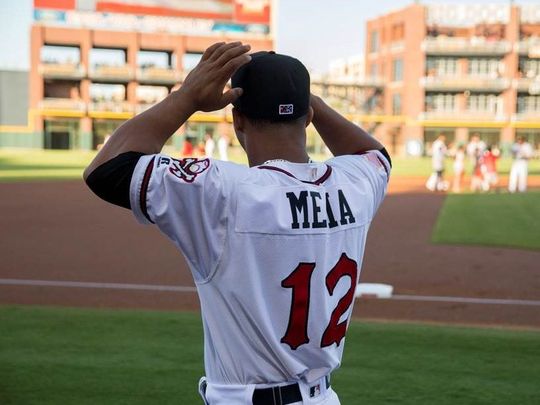
Mejia has played a little bit of outfield and third base, but AJ Preller has said that the Padres are going to have him play as a catcher. This is good for Mejia as the Padres have a plethora of outfielders and Wil Myers will be spending some time at third base at least for the rest of the season, so Mejia would theoretically be splitting time with Austin Hedges for the primary spot as catcher.
What doesn’t help Mejia’s case is that his acquisition has lit a fire in Hedges’ bat, as the catcher has gone 19-63 at the plate with five home runs and eight RBI while just seeing a seven-game hitting streak get snapped. While Hedges is still sitting at a .313 OBP thanks to his high strikeout rates, his batting average and power numbers have slowly started to climb thanks to his offensive outburst. Pair that with elite defensive prowess, and the Padres have themselves a catcher worthy of starting every day.
Mejia will be with San Diego at some point in the season as his talent will force Preller’s hand. He will most likely platoon with Hedges or spend some time at third base, but the touted prospect will be getting his time in the spotlight.
Allen has made only one start in Triple-A, but so did Nix until he got his call-up to the big leagues. The eighth-ranked prospect on MLB Pipeline, Allen has made 20 starts and has gone a combined 11-6 with a 2.62 ERA and a 1.05 WHIP, compiling a 131/41 strikeout-to-walk ratio. After dominating much of Double-A San Antonio, Allen was moved up to El Paso, where he recorded a quality start by pitching six innings of one-run ball, striking out six batters, while walking three and giving up four hits.
Allen, acquired way back in 2015 in the Craig Kimbrel deal, has worked his way up from Fort Wayne and overcome injuries to make it where he is now. With the demotion of Walker Lockett and a struggling Clayton Richard, a spot could soon open for Allen even with the impending arrival of Eric Lauer off the 10-day DL.
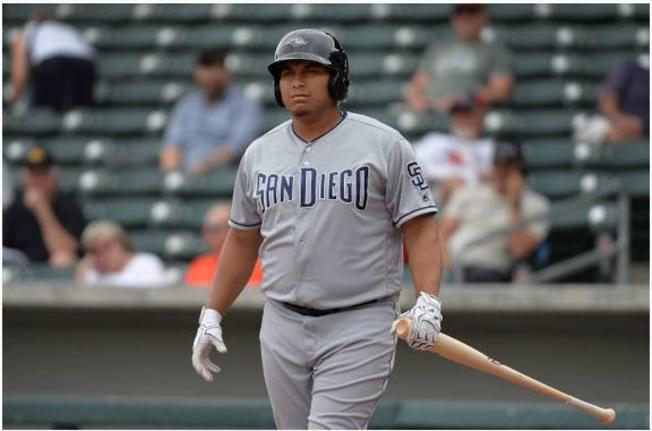
Advanced metrics back him up as well. Allen carried a 9.30 K/9 as well as a 2.83 BB/9 across Double-A, and while they are higher than his ERA, a 3.29 FIP and a 3.67 xFIP are still excellent numbers to carry (note that Double-A stats are being used simply because Allen has made one start at Triple-A as opposed to 19 at Double-A). Allen is striking out batters a 25% clip and walking them at a 7.9% rate, a healthier rate than Richard’s 16.4 K% and 9.5 BB%. Allen is primed to swoop on a spot in the starting rotation if he continues pitching well at El Paso.
Yes he is blocked at first base by Eric Hosmer. Yes there are a dearth of outfielders already in the mix even with Myers moving to third base (for now). But the soon-to-be 22-year-old has done nothing but hit at the Double-A level and, while he is blocked at every position for San Diego, who’s to say that his bat won’t play for another team?
Let’s look at what Naylor brings to the table. A pristine .306/.395/.465 is backed up by his 15 home runs and 68 RBI. His 11.8 K% is matched by a BB% of 11.8, proving what scouts say about him tightening up his approach at the plate, while a .160 ISO power supports those power numbers. Naylor also brings a 133 wRC+ to the table and sports a healthy .325 BABIP, showing that it’s not just luck driving his numbers.
What dings Naylor the most is his below-average defensive skills. Because of Hosmer manning first base, San Diego shifted him to left field to try and add some versatility to his skill set, but he has committed 11 of his 14 errors in the outfield. With other outfielders fighting for playing time on the Major League roster, Naylor will have to make some serious adjustments if he want to man an outfield position for the Padres.
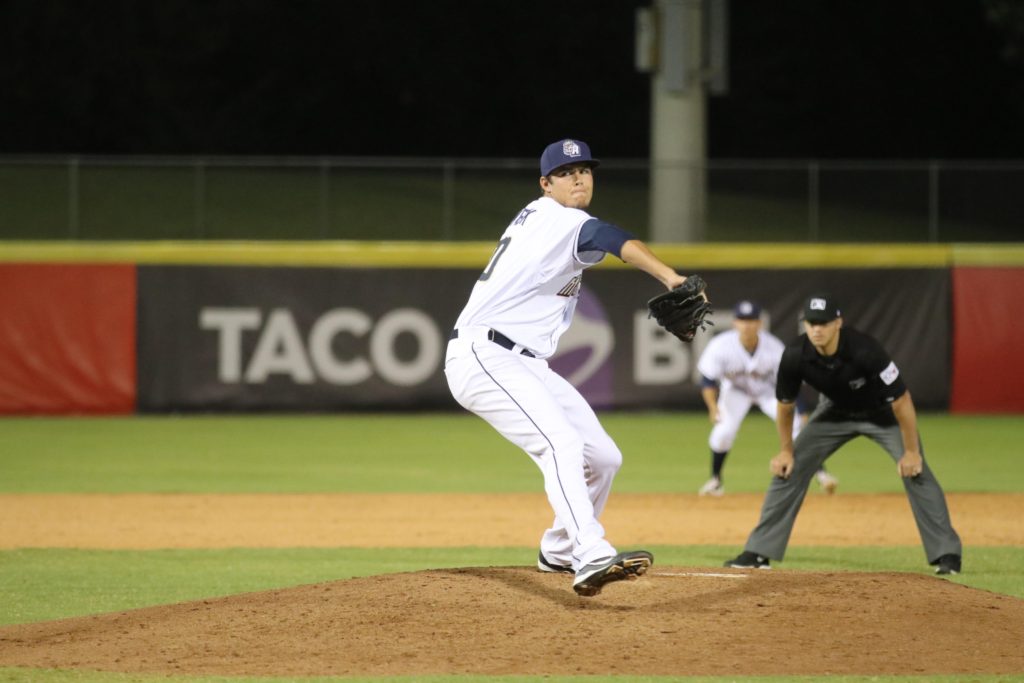
However, what better way to work on his defense than with Major League coaches? A September call-up will give Naylor the chance to tune up his outfield drill and flex his muscles with the bat while auditioning for playing time, whether it be for the Padres or for another team.
Amongst a strong crop of blossoming Padres bullpen arms is Wieck, a 26-year-old left-hander who was originally acquired by the Padres in the Alex Torres deal in 2015. Standing at six-foot-nine, Wieck is a giant of a pitcher and has compiled a 4.40 ERA with a 1.53 WHIP in Triple-A, but his FIP and xFIP numbers are more encouraging at 3.85 and 2.97, respectively. He has also compiled a 16.33 K/9 as well as a 5.65 BB/9 thanks to a 26/9 strikeout-to-walk ratio.
Wieck sports much better numbers in Double-A with a 1.93 ERA and a 1.00 WHIP while carrying a 2.29 FIP and a 3.49 xFIP. Wieck’s contact rates are interesting to say the least, as he has a 26.9 groundball % and a 53.7 flyball %, which could play well in spacious Petco Park. His flyball rate, while quite high, has not equated to home runs as he has allowed only three home runs across both levels.
Wieck, while he may not be the most heralded of the Padres’ prospects, still has the potential to be a quality set-up man in the bullpen thanks to his height and plus fastball. It would be worth calling him up when the rosters expand in September to see what he brings to the table.
Of course, these are just five prospects that could be seeing time in the majors. Pitchers like Cal Quantrill and Chris Paddack could very well force San Diego to bring them up to have their chance in the rotation, while hitters like Austin Allen and Ty France can continue their hot paces in the Major League.
I am currently attending San Diego State University while working on achieving a major in journalism. At SDSU, I write for The Daily Aztec while also hosting the sports radio show “Picked Off”, for KCR Radio. A loyal fan of San Diego sports, I hope to bring content that you will enjoy reading.
Here is a crazy, CRAZY idea: Let the best players play. I know, crazy, huh? Hosmer, after a hot hitting streak for a week or two, has boosted his WAR to 0.5. That puts him around 130th in the NL. While several current Padres are doing better, how many more would do better if brought up this year, or at least next year (Naylor; Allen; etc)? This, of course, would mean sitting Hosmer and his $144 MILLION. Why not? If you truly want to win, would you not play your best players? Naylor was hitting even better earlier when he was just playing 1B (as most players do, like Myers). What are the chances, then, that the Padres give Naylor a start at 1B next year? (or anyone else) What is the ratio of how bad Hosmer is to the actual desire to win, in order for the Padres to sit Hosmer and play a better player at first?
A team that simply played its best players would have my respect. The Padres are not going to do that for the next 8 years (barring something unexpected, particularly in getting rid of Hosmer).
Wouldn’t shock me if Urias and Mejia were kept at El Paso for the playoffs, which possibly could mean a mid-September callup at the earliest. It’s the same thing they did for Renfroe, Margot, and Hedges in 2016. I like Naylor, but it’s too early to make room on the 40-man for him, and we already have too many outfielders who need playing time.
Great article. I say bring them all up. Let’s get a look at them. And that includes Naylor. Let him play 1b and sit Hosmer. A player should only be guaranteed playing time if he produces.